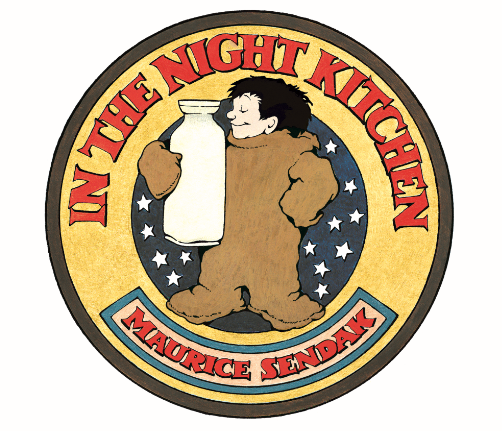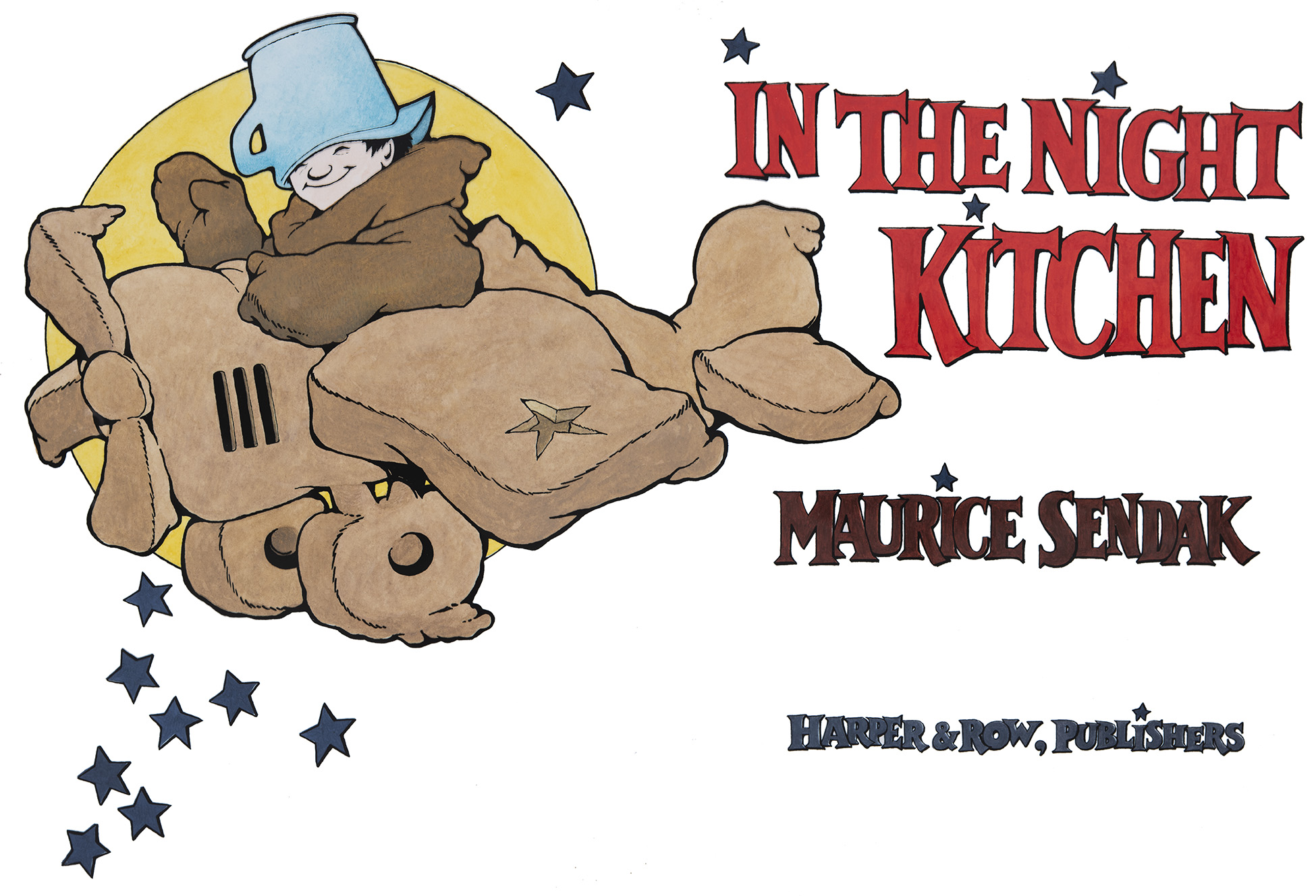The first public exhibition of items in The Maurice Sendak Collection at UConn is “Into the Night: Inspirations and Influences in Maurice Sendak’s In the Night Kitchen,” which celebrates the 50th anniversary of one of the most important books by the award-winning children’s author and illustrator.
The exhibition, curated by UConn’s Archives and Special Collections, is on display in the gallery at the Thomas J. Dodd Research Center in Storrs through Dec. 20.
In 1969, Sendak wrote excitedly of In the Night Kitchen. “I’m mad for it-and it’s mad,” he noted about the book that tells the tale of a sleeping boy’s dream about searching for milk to help bake a cake. Published a year later, the exuberant nakedness of its hero, Mickey, led to its being banned from certain libraries, and even today there are those who think it is inappropriate for children.
The exhibition includes the multi-layered and various inspirations and influences found in In the Night Kitchen such as Walt Disney’s Mickey Mouse and Winsor McKay’s comic strip Little Nemo in Slumberland. Other highlights are the artwork and process materials for the book as well as an exploration of the book’s censorship and public reaction.

A symposium focusing on In the Night Kitchen will take place Friday, Nov. 15, from 10:30 a.m. to 6:30 p.m. in the Doris & Simon Konover Auditorium of the Thomas J. Dodd Research Center.
“This exhibition really aligns with the themes that will be discussed during the symposium,” says Clara Nguyen, archivist for the Sendak Collection, and exhibit curator. “Then you have the childhood memories he had living in Brooklyn, New York and characters like Mickey Mouse and Little Nemo. He loved them both. They’re all incorporated in In the Night Kitchen.”
The long display case in the gallery of the Thomas J. Dodd Research Center traces the development of the book and Sendak’s influences for its storyline and characters, beginning with the Brooklyn, New York born author’s dedication of the book to his parents, Sadie and Philip, who immigrated to the United States from Poland.
There is a detailed sample layout of the primary character Mickey – named for Mickey Mouse — falling through the night and seeing his mother and father holding one an another in the bed. Other images refer to family history such as 1930s household items that include a hanging lamp and a radio cabinet with a clock on top that were referenced in notes from a Sears Catalog published during Sendak’s childhood.
Direct references to Sendak’s creative influences can be seen in the opening comic book-style illustration panels of Mickey in his bed that mirror the opening scenes of McKay’s Little Nemo in Slumberland, with Nemo sitting in his bed. Sendak was a fan of film legend Oliver Hardy and a sketchbook page of reference drawings of the comedian are near images of In the Night Kitchen’s three bakers, who all share Hardy’s likeness.
The exhibit also includes examples of the scope of Sendak’s prominence as an author, with multiple editions of the book in several languages including Spanish, German and Afrikaner, as well as commercial items such as a greeting card, T-shirt, and rubber stamp with themed images from the book.
On the back wall of the gallery is a mural of an illustration from the book showing the three bakers watching Mickey flying above a milk bottle that is part of a skyline made of ingredients for a cake. A seven-minute video of the story made by Westin Woods in 1987 also runs continuously on two monitors.
Participants in the Nov. 15 symposium will include Arthur Yorinks, writer and collaborator of Sendak; Katherine Capshaw, professor of English at UConn and president of the Children’s Literary Association; Michael Lobel, professor of art history at Hunter College; Lara Saguisag, associate professor of English at Staten Island College CUNY; Barbara McClintock, award-winning children’s book author and illustrator; Michael DiCapua, renowned book editor and art director; and Lynn Caponera, president of The Maurice Sendak Foundation.
“Into the Night: Inspirations and Influences in Maurice Sendak’s In the Night Kitchen” is open Monday through Friday from 9 a.m. to 4 p.m.



